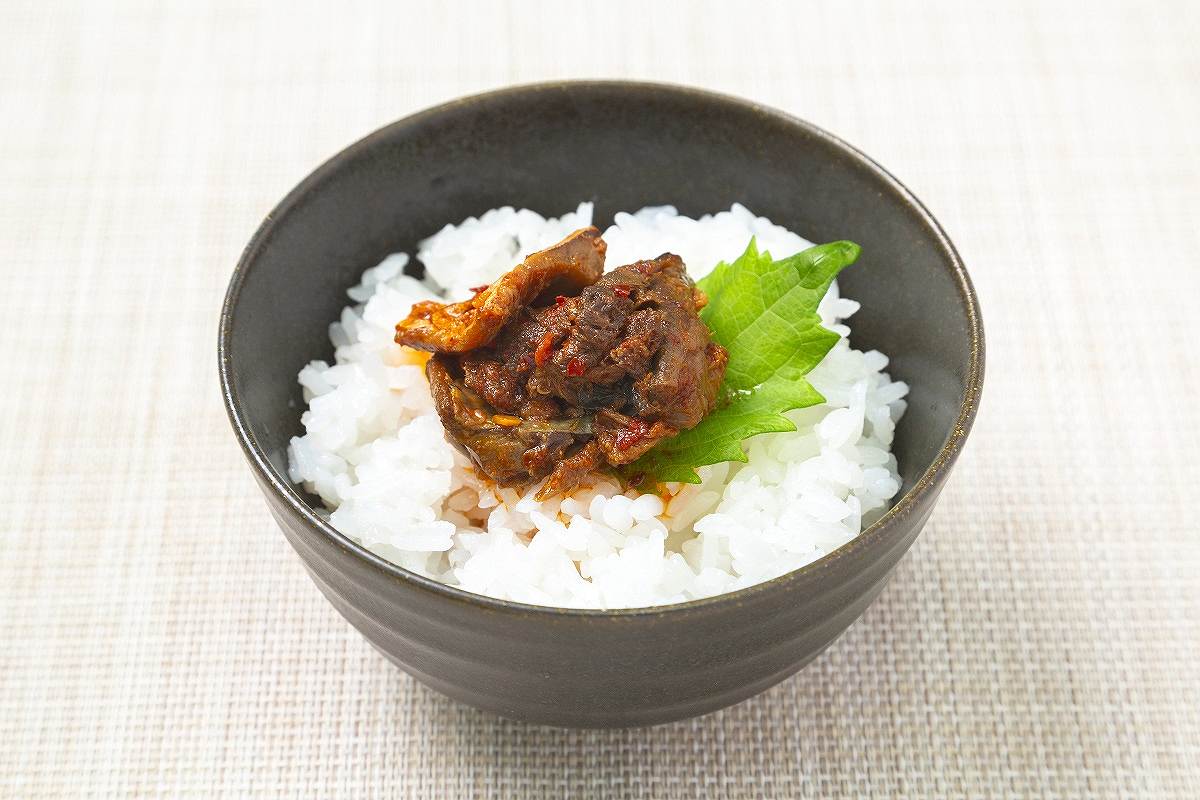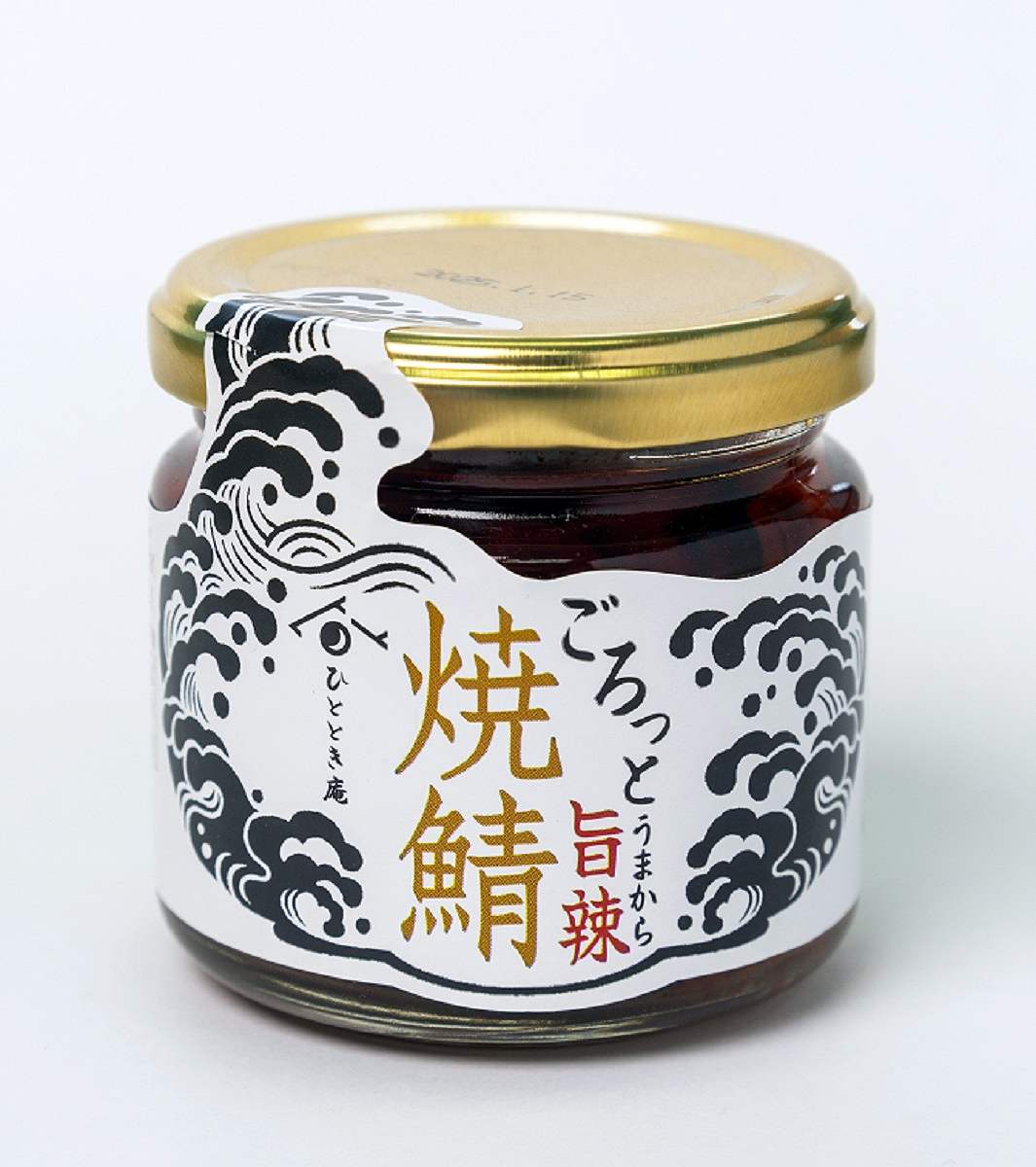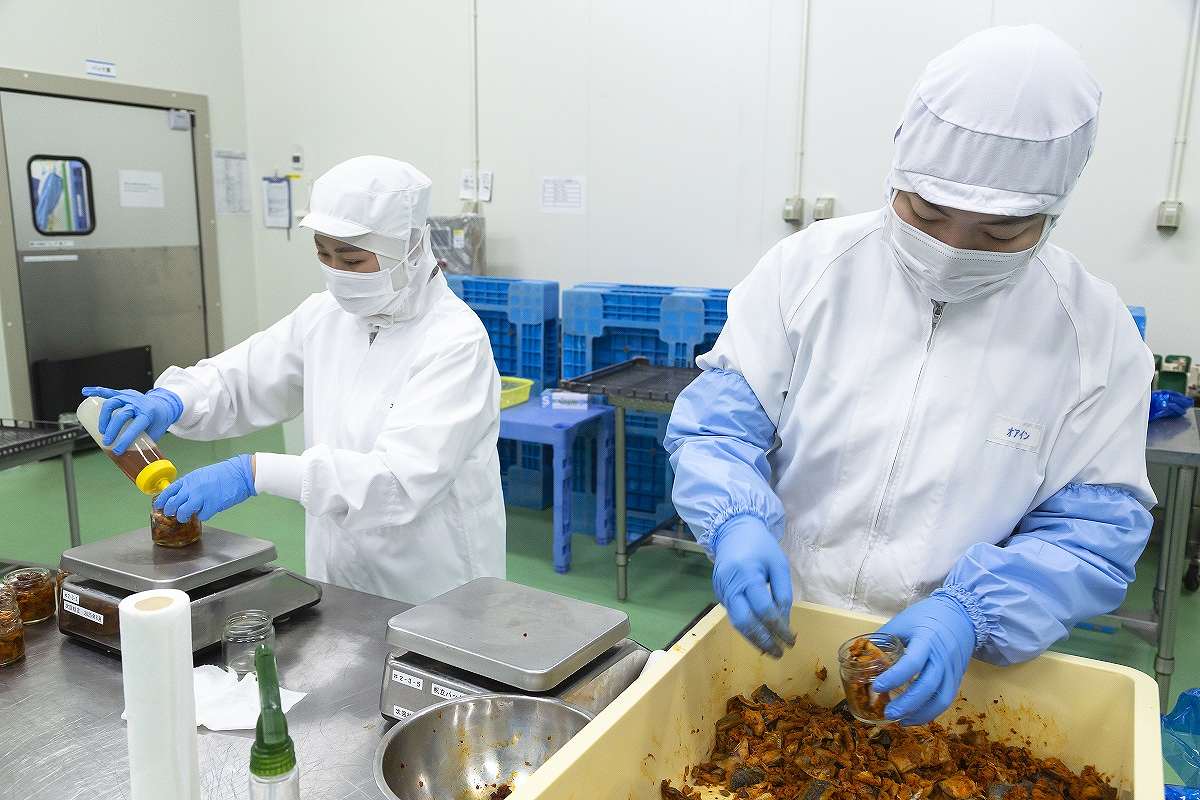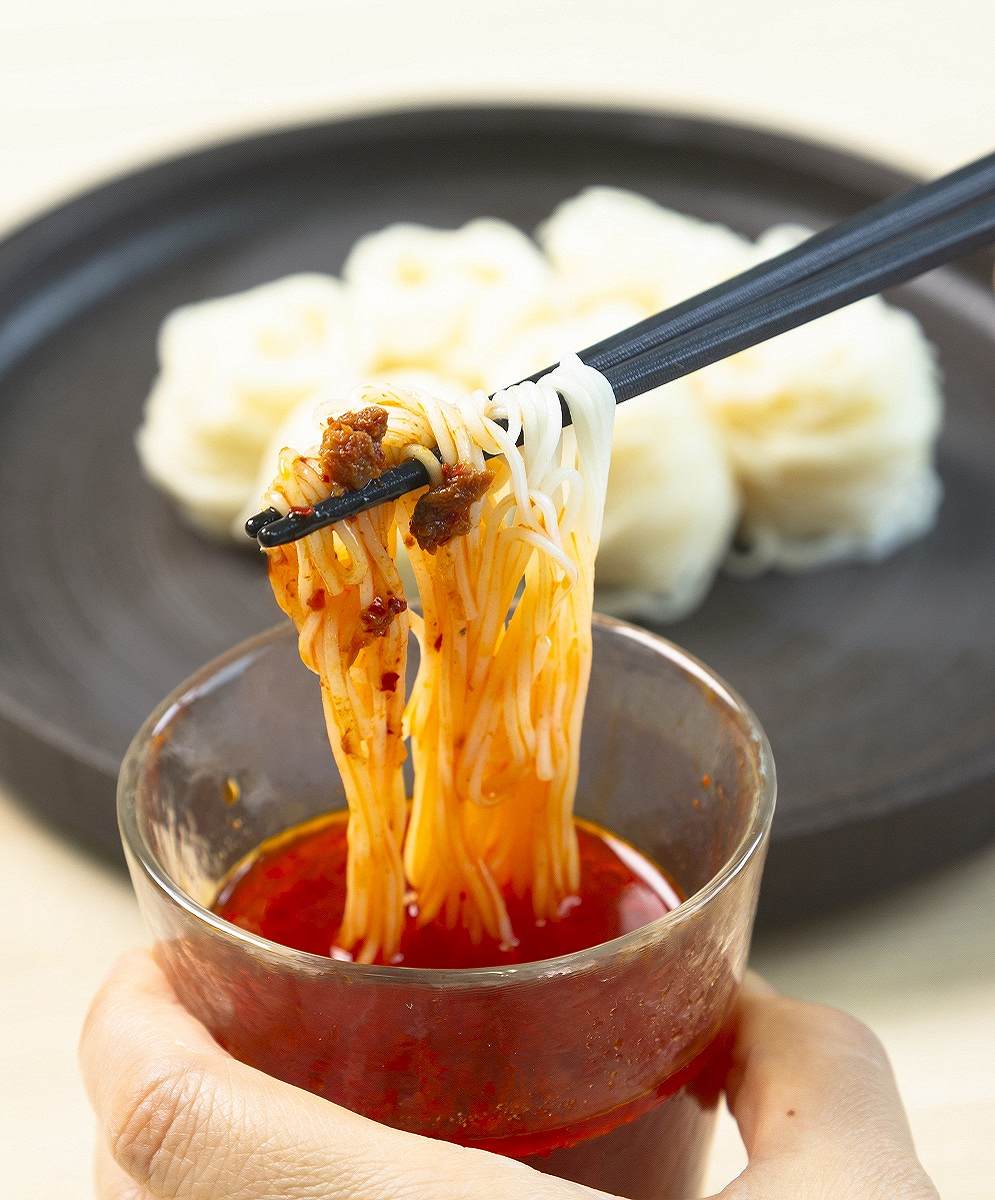Japan Tourism / Zesty Saba Mackerel Goes Great with Rice; Miyagi Pref. Company’s Fish Product Also Complements Tofu, Noodles

Gorotto Umakara Yakisaba is put on top of rice.
13:00 JST, October 29, 2024

Rice prices rose this summer as a result of insufficient supply. But the shortage has eased at last as newly harvested rice has reached the market. One thing that can make this staple of the Japanese diet even more delicious is topping it with a jar of “rice’s best friend,” saba mackerel, made in Onagawa, Miyagi Prefecture.
When you open the lid of the jar, your expectations will swell as you find surprisingly large chunks of mackerel marinated in chili oil. The rich, grilled mackerel and the spicy, savory seasoning go together perfectly and bring out an exquisite flavor when eaten with steaming rice.

Gorotto Umakara Yakisaba
The product, Gorotto Umakara Yakisaba, is made by fisheries company Senrei Co., whose head office and factory are located just outside the Onagawa Fish Market.
The waters off Kinkasan Island in Ishinomaki, Miyagi Prefecture, where the Kuroshio current collides with the Oyashio current, are one of the world’s three great fishing grounds. Onagawa thrives on the diverse bounty of seafood caught in coastal waters. The cultivation of oysters, scallops, silver salmon and other seafood is also thriving in the town.
Senrei was established in 2013 by Ishimori Shoten Co., a company that had been in the fish refrigeration and freezing business in Onagawa for many years, and Okasei Corp., a processor and seller of fresh fish. Both companies suffered extensive damage in the 2011 Great East Japan Earthquake.
At the time of the disaster, Ishimori Shoten distributed fish that had been stored in its freezers — which had escaped the flooding — to evacuation shelters. But a company official said it was frustrating that the fish then had to be discarded since there was no way to cook it at the shelters.
“After that experience, we started making products that can be stored for long periods at room temperature and be delicious without being cooked,” said Koichi Utsumi, the head of Senrei’s quality control department. The product also makes it easy to eat fish on a daily basis, making it a good choice for emergency supplies.
Mackerel caught off the coast of Kinkasan Island is the primary ingredient in Gorotto Umakara Yakisaba. The fish are guaranteed to be fresh since they are landed immediately after being caught.
The company freezes the mackerel while they are still fresh, and then cleans and cuts them, further preserving their freshness. The fish is then grilled, seasoned and carefully put into jars manually.
Besides the Gorotto Umakara Yakisaba, the company also offers more standard mackerel products, such as mackerel cooked with soy sauce or miso. There is Thai-style green mackerel curry among the company’s curry products. All of these come in trays where they can be stored for long periods of time, and they can be heated and eaten without taking them out.


Left: Saba mackerel that has been prepared with chili, garlic and other ingredients. Right: Workers put grilled saba mackerel into jars.
Senrei’s first idea for Gorotto Umakara was to use scallops, but he ultimately decided on mackerel, believing that the solid flavor of grilled mackerel, which is popular with many people, would go better with chili oil.

Gorotto Umakara Yakisaba can be added to mentsuyu dipping broth for somen noodles.
The biggest challenge was the seasoning of the fish, the company said.
“If it is just spicy, people will get tired of it. It took about a year and a half to create a flavor we thought was right, which is both savory and spicy, and something that makes people want to eat it repeatedly,” said Maya Suzuki of the company’s product development section.
The product, with its large mackerel chunks, is a good match for simple dishes like somen noodles or hiyayakko cold tofu, too, allowing people to get nutrition easily and making these meals feel like a feast.
The company says the product is also good as a condiment for hot pot dishes in the coming season.
***
Japan Tourism is presented in collaboration with Ryoko Yomiuri Publication, which publishes Ryoko Yomiuri, a monthly travel magazine. If you are interested in the original Japanese version of this story, click here.
"Features" POPULAR ARTICLE
-

Sanrio to Open Museum in Yamanashi Pref. Dedicated to Founder, Exhibits Include Hello Kitty, Other Characters
-

Autumn Foliage Surrounds Visitors to Tokyo’s Showa Kinen Park
-

My Daughter No Longer Speaks to Me, But I Want to See Her and My Grandchild
-

Kumamoto: Public Bath Refurbished as Library Where You Can Chat, Take Photos
-

Frozen Vegetables: Demand Rises for Convenient, Tasty Domestic Produce
JN ACCESS RANKING
-

Tokyo Economic Security Forum to Hold Inaugural Meeting Amid Tense Global Environment
-

Keidanren Chairman Yoshinobu Tsutsui Visits Kashiwazaki-Kariwa Nuclear Power Plant; Inspects New Emergency Safety System
-

Imports of Rare Earths from China Facing Delays, May Be Caused by Deterioration of Japan-China Relations
-

University of Tokyo Professor Discusses Japanese Economic Security in Interview Ahead of Forum
-

Japan Pulls out of Vietnam Nuclear Project, Complicating Hanoi’s Power Plans
























